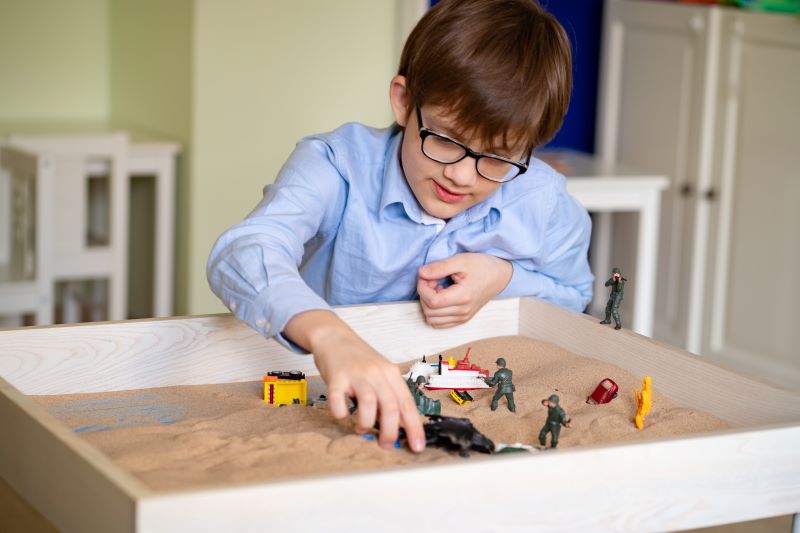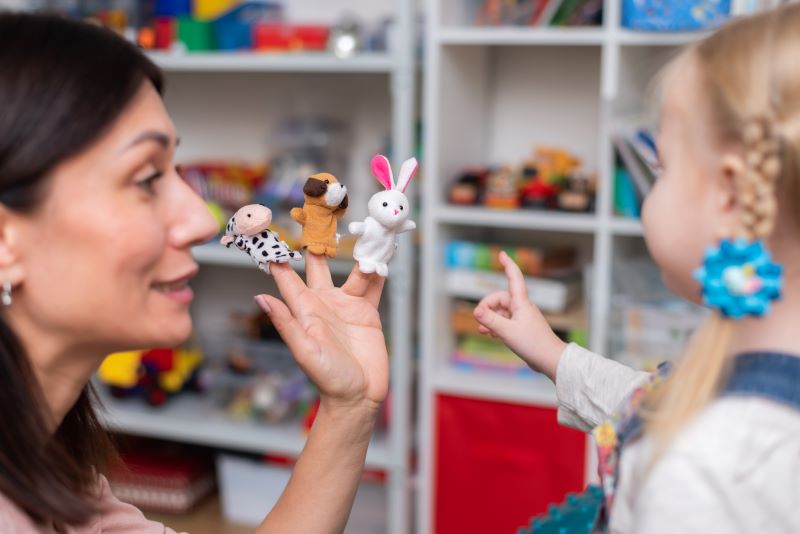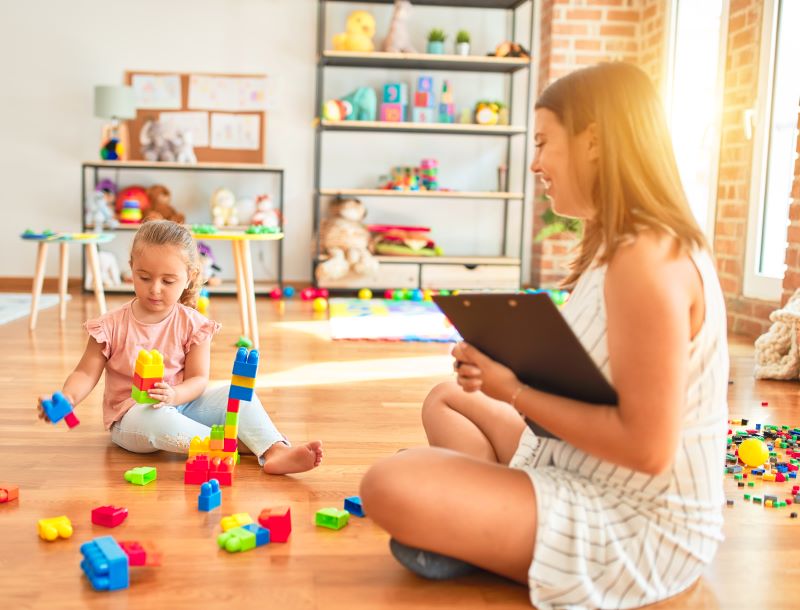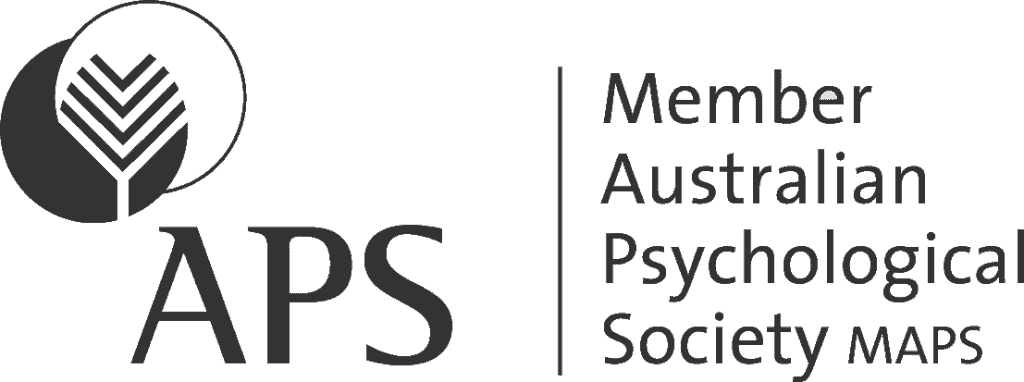![Play Therapy: A Parent's Guide [Must Read for 2024] by Counselling in Melbourne](https://www.counsellinginmelbourne.com.au/wp-content/uploads/2024/02/Play-Therapy-A-Parents-Guide-.jpg)
Play therapy is a transformative approach catering to children aged 3-10 that employs a variety of techniques involving play and imaginative exercises. This method aids in the expression of thoughts and emotions, enabling young minds to overcome emotional challenges. By actively engaging with toys, art supplies, and games, children can navigate their inner conflicts, enhance their social and emotional well-being, and learn to develop constructive behaviours to serve them well in life.
The Essence of Play Therapy
The fundamental goal of play therapy is to establish a secure and nurturing environment, allowing children to process their emotions at their own pace. Unlike conventional methods involving direct questioning or conversation, play therapy work serves as a natural medium for expression. Through activities such as roleplay, drawings, and games, children can project their experiences and feelings onto various elements, providing them with an opportunity to work through troubling issues. In essence, play therapy fosters a better understanding of oneself, builds confidence, and nurtures the development of coping mechanisms for life’s challenges.
Diverse Approaches in Play Therapy
Play therapists employ various approaches to cater to the unique needs of each child. One prominent method registered play therapists use is Child-Cantered Play Therapy, where the child leads the session, guiding the content and flow of play while the therapist observes and provides a nurturing presence. Another common approach is Cognitive-Behavioural Play Therapy, which utilises play to instil positive behaviours and thinking patterns. Therapists gently guide children, offering modelling and reinforcement to encourage desired behaviours, addressing issues like aggression, anxiety, and social skills.

Child-Centered Play Therapy: Nurturing Exploration
Child-Centered Play Therapy (CCPT) is a therapeutic approach that empowers children to take the lead in the therapeutic process. In CCPT sessions, the therapist creates a safe and non-judgmental environment where children are encouraged to explore their feelings, thoughts, and experiences through play.
Here are some advantages, disadvantages, and suitable situations for utilising Child-Centered Play Therapy:
Advantages:
- Empowerment: CCPT empowers children by allowing them to make choices and decisions during the session. This autonomy can boost their confidence and self-esteem as they feel more in control of their therapeutic journey.
- Expression: Children often find it easier to express themselves through play rather than verbal communication. CCPT provides a platform for them to communicate their emotions, experiences, and struggles in a natural and non-threatening way.
- Flexibility: This approach is highly adaptable to each child’s unique needs and preferences. Therapists can tailor the activities and materials used in the session to align with the child’s interests and developmental stage.
- Child-Centered: CCPT respects the child’s pace and agenda, allowing them to lead the session based on their comfort level and readiness to explore certain topics or issues.
Disadvantages:
- Limited Structure: The open-ended nature of CCPT sessions may lack the structure and direction that some children require for therapeutic progress. Without specific goals or objectives set by the therapist, progress may be less measurable.
- Time-Consuming: Child-Centered Play Therapy sessions can be time-consuming, as progress relies on the child’s willingness to engage in the therapeutic process. It may take several sessions before significant breakthroughs or insights occur.
- Challenging for Some Therapists: Implementing CCPT requires therapists to relinquish control and trust in the child’s innate ability to heal through play. Some therapists may find it challenging to adopt this non-directive approach, especially if they prefer more structured interventions.
Suitable Situations:
- Young Children: CCPT is particularly effective with young children who may struggle to express themselves verbally. Play provides a natural language for communication, allowing even very young children to participate in therapy effectively.
- Trauma and Abuse: Children who have experienced trauma or abuse may benefit from the gentle and non-intrusive approach of CCPT. It allows them to process their experiences at their own pace and in a safe environment.
- Anxiety and Attachment Issues: CCPT can help children struggling with anxiety or attachment issues by fostering a sense of security and trust in the therapeutic relationship. Through play, children can explore their fears and develop healthier coping mechanisms.
Cognitive-Behavioural Play Therapy: Shaping Positive Behaviours
Cognitive-Behavioural Play Therapy (CBPT) is a therapeutic approach that integrates principles of cognitive-behavioural therapy (CBT) with play techniques to address behavioural and emotional challenges in children. In CBPT sessions, therapists focus on helping children develop positive behaviours and thinking patterns through structured activities and guided play. Here are some advantages, disadvantages, and suitable situations for utilising Cognitive-Behavioural Play Therapy:
Advantages:
- Structured Approach: CBPT provides a structured framework for addressing specific behavioural issues, making it easier for both therapists and children to identify goals and track progress over time. The structured nature of CBPT sessions can provide a sense of predictability and security for children.
- Skill-Building: CBPT emphasises skill-building and problem-solving techniques to help children learn to manage their emotions and behaviours effectively. Therapists teach coping strategies, social skills, and cognitive restructuring techniques through age-appropriate play activities.
- Targeted Intervention: CBPT allows therapists to target specific behaviours or problems areas, such as aggression, anxiety, or social skills deficits, using tailored play interventions. Therapists can design activities that directly address the child’s needs and reinforce positive behaviours.
- Integration of CBT Principles: By integrating principles of cognitive-behavioural therapy into play-based interventions, CBPT helps children understand the connection between their thoughts, feelings, and actions. This cognitive restructuring can lead to long-term changes in behaviour and emotional regulation.
Disadvantages:
- Limited Spontaneity: The structured nature of CBPT sessions may limit spontaneity and creativity in play, which could be challenging for children who prefer more unstructured and imaginative activities. Therapists need to balance structured interventions with opportunities for free expression.
- Complexity for Younger Children: Some younger children may struggle to understand abstract cognitive concepts or engage in structured problem-solving activities. Therapists may need to adapt CBPT techniques to make them developmentally appropriate for younger children.
- Reliance on Therapist Guidance: CBPT relies heavily on therapist guidance and direction, which may not empower children to develop independent problem-solving skills. Therapists need to gradually fade their support over time to encourage children to apply learned skills in real-life situations.
Suitable Situations:
- Behavioural Issues: CBPT is highly effective for addressing behavioural issues such as aggression, defiance, impulsivity, and conduct problems. Therapists can use role-playing, social skills training, and reinforcement techniques to promote positive behaviours and reduce problem behaviours.
- Anxiety Disorders: CBPT can help children with anxiety disorders learn to manage their anxious thoughts and fears through exposure-based play activities and relaxation techniques. Therapists can teach cognitive restructuring strategies to challenge negative thinking patterns.
- Social Skills Deficits: CBPT is beneficial for children who struggle with social skills deficits, such as difficulty making friends, reading social cues, or maintaining friendships. Therapists can use role-playing, cooperative games, and social stories to teach appropriate social behaviours.
Solution-Focused Play Therapy: Empowering Through Solutions
Solution-Focused Play Therapy (SFPT) is a therapeutic approach that emphasises empowering children to identify and implement solutions to their problems. Therapists employing SFPT focus on utilising the child’s existing strengths and resources to overcome challenges, rather than dwelling on the problems themselves. Here are some advantages, disadvantages, and suitable situations for utilising Solution-Focused Play Therapy:
Advantages:
- Empowerment: SFPT empowers children by shifting the focus from problems to solutions, fostering a sense of autonomy and self-efficacy. By encouraging children to identify their strengths and resources, therapists help them develop confidence in their ability to overcome difficulties.
- Positive Outlook: SFPT promotes a positive outlook by highlighting the child’s capabilities and past successes. Therapists use play behaviours to elicit positive experiences and accomplishments, reinforcing the child’s belief in their ability to create change.
- Goal-Oriented Approach: SFPT is goal-oriented, with therapists and children collaboratively setting achievable goals for therapy. By focusing on specific, measurable outcomes, therapists help children stay motivated and track their progress over time.
- Flexibility: SFPT is highly adaptable to the unique needs and preferences of each child. Therapists can tailor interventions to match the child’s developmental level, interests, and cultural background, making therapy more engaging and effective.
Disadvantages:
- Limited Exploration of Problems: The solution-focused approach may overlook important underlying issues or emotional experiences that require deeper exploration and processing. Therapists need to ensure that children have space to express and validate their feelings, even as they focus on solutions.
- Dependency on External Solutions: SFPT relies on the child’s ability to identify and implement solutions with the therapist’s guidance. Children who lack access to supportive environments or resources outside of therapy may struggle to apply solution-focused strategies in real-life situations.
- Potential for Oversimplification: SFPT runs the risk of oversimplifying complex problems or systemic issues that cannot be easily resolved through individual efforts. Therapists need to balance the focus on solutions with an understanding of the broader context in which the child operates.
Suitable Situations:
- Brief Interventions: SFPT is well-suited for brief interventions aimed at addressing specific problems or goals within a limited number of sessions. Therapists can help children identify practical solutions and implement them quickly, leading to tangible improvements in a short amount of time.
- Strength-Based Approach: SFPT is ideal for children who respond well to strength-based approaches that focus on building on existing resources rather than fixing deficits. Therapists can capitalise on the child’s strengths and interests to facilitate meaningful change.
- Goal Setting: SFPT is effective for children who are motivated to set and achieve goals for themselves. Therapists can help children break down larger problems into smaller, more manageable tasks, making progress feel more attainable and rewarding.
Theraplay: Enhancing Self-Esteem and Attachment
Theraplay sessions involve structured play activities, aiming to improve a child’s self-esteem, trust, and attachment. Through playful interactions, therapists create an environment where children feel nurtured, engaged, challenged, and successful, promoting positive parent-child attachment and social relationships.
Holistic Benefits of Play Therapy for Children
Play therapy offers a multitude of advantages that contribute to the holistic development of children. By providing a safe and supportive environment for self-expression, it enables children to confront difficult emotions, acquire essential coping skills, and develop self-confidence.
Expression of Feelings in a Safe Environment
One primary benefit of play therapy is offering children a secure space to express their feelings. Through activities like pretend play and interaction with toys, kids can convey emotions that may be challenging to articulate verbally. Play therapists, devoid of judgment, provide empathy and understanding, facilitating a safe exploration of inner thoughts and experiences crucial for the healing process.
Developing Coping Skills Through Play
Play therapy aids children in learning new coping strategies to navigate stress, anxiety, anger, and sadness. Therapists guide them towards positive ways of processing emotions and responding to challenges. Through symbolic play scenarios, children learn to practice problem-solving and conflict resolution, fostering better emotional regulation and long-term resilience.
Building Self-Esteem Through Nurturing Environments
Play therapy contributes to building self-confidence in children by creating nurturing environments full of warmth and acceptance. The praise and encouragement received during sessions may fill gaps present in other areas of their lives. As children learn and master new social and emotional skills, they gain greater self-awareness and a sense of control over themselves. With the support of therapists, play therapy empowers children, teaching them their inherent worth.
Common Techniques in Play Therapy
Play therapists employ a variety of techniques and tools to find play therapy help children express themselves, address issues, and achieve therapeutic goals through play. Some common techniques include:
Sandplay: Unveiling Unconscious Feelings
In Sandplay, children are given a tray filled with sand and miniatures to create scenes, projecting their inner thoughts and emotions. The therapist observes, takes notes, and engages in discussions with the child, allowing the free expression of unconscious feelings.
Storytelling: Building Communication Skills
Children are provided with story stems or beginnings, along with puppets, dolls stuffed animals, or figures, to act out a story. This technique allows children to achieve catharsis and healing by projecting experiences and feelings onto characters, enhancing communication skills.

Role Playing: Exploring Real-Life Scenarios
Role playing involves acting out various real-life situations, often with puppets or dolls representing the child and others in their life. This technique enables children to work through challenging relationships, practice responses, build confidence, and explore different perspectives.
Arts and Crafts: Nonverbal Expression
Children are given art supplies like paint, clay, crayons, and beads to freely create. This process aids nonverbal and verbal expression, helping children discuss their artwork to build communication skills. Arts and crafts contribute to focus, self-regulation, and coping with anxiety or stress.
Conditions Addressed by Play Therapy
Play therapy with children has proven an effective intervention in treating various common conditions and behavioural disorders affecting children, including anxiety, depression, trauma/PTSD, behavioural issues, and developmental challenges.
Play Therapy for Anxiety: Unlocking Expression
Play therapy provides an avenue for children suffering from anxiety to express their feelings of worry, fear, or nervousness. Therapists guide children through activities such as role-playing anxious situations with dolls, drawing pictures of anxious thoughts, or using sand trays to recreate anxious feelings.
Play Therapy for Depression: A Path to Healing
Children with depression may benefit from play therapy interventions by using play to safely act out feelings of sadness, hopelessness, or loneliness. Techniques such as pretend play and puppet use may help depressed children identify and process negative emotions themselves, ultimately contributing to lifting their mood over time.
Play Therapy for Trauma/PTSD: Gaining Control Through Play
Re-enacting traumatic experiences through play, under the therapist’s guidance, allows children suffering from trauma or PTSD to gain control over those events. Activities such as role play, drawings, or playing with sand enable the recreation of a trauma experience, empowering children to change or direct outcomes.
Play Therapy for Behavioural Issues: Constructive Outlet for Expression
Play therapy provides a constructive outlet for behaviours like aggression, defiance, or hyperactivity. Techniques such as hitting punching bags, engaging in imaginary play with dolls or toys, and participating in physical games allow children to safely act out their feelings, with therapists guiding them to understand the consequences of their behaviours.
Play Therapy for Developmental Issues: Leveraging Natural Learning
Play, being the natural mode of learning for children
, is utilised in play therapy to support children address developmental issues. Therapists use games, role-playing, and hands-on activities to target social, physical, cognitive, and emotional skills crucial for growth. Play becomes a motivating factor for children learning disabilities to practice emerging skills.
A Glimpse into a Play Therapy Session
In a typical play therapy session, the therapist adopts a supportive and understanding role to facilitate the child’s play in a safe environment. The therapeutic play-room is equipped with various toys and materials, including dolls, action figures, building blocks, arts and crafts supplies, sand trays, puppets, and books. The therapist observes how the child interacts with these elements, allowing them to express themselves freely through play.

Activities in a play therapy session may involve role-playing with dolls or puppets, building structures with blocks, engaging in artistic endeavors, perusing picture books, playing board or card games, engaging in pretend play, and using sand trays to create scenes. The therapist pays close attention to emerging themes, behaviors, and emotional responses, providing support, setting limits, reflecting feelings, and guiding the child through emotional struggles using the natural language of group play therapy together.
Evaluating Progress and Expectations
Concerning the timeframe for observing results in play therapy, it varies for each child and the specific issues addressed. Generally, changes are noticeable within 6-8 weeks of consistent weekly sessions. The effectiveness of play therapy relies on the establishment of trust and consistency between the therapist and the child. Regular sessions strengthen this therapeutic relationship, enabling the child to feel secure in expressing themselves through play.
It’s crucial to acknowledge that play therapy is not a quick fix for behavioral disorders. While some improvements may manifest early on, lasting change requires time. Commitment to the therapeutic process without expecting overnight results is key to treatment outcomes. The more consistent the sessions, the higher the likelihood of play therapy producing tangible benefits related to the child’s social skills, emotional regulation, anxiety, trauma, and more.
Parents should anticipate gradual but meaningful improvements in their child’s language over 2-3 months of weekly play therapy sessions. Monitoring the child’s behaviours, mood, and interactions provides valuable feedback on the efficacy of play therapy. Maintaining open communication with the child play therapy therapist offers opportunities to discuss progress and make adjustments if necessary.
Selecting a Competent Play Therapist
When seeking a play therapist for a child, ensuring the registered play therapist is properly trained and certified is essential. Consider the following tips:
- Look for a licensed mental health professional, such as a psychologist, counsellor, or social worker, with a master’s degree or doctorate in a mental health field.
- Verify specialised training and certification in play therapy, preferably from reputable programs such as the Australian Play Therapists Association, or the The Play Therapy Practitioners Association.
- Inquire about the therapist’s experience with play therapy, including the number of years in practice, the age groups worked with, and whether they use play therapy exclusively or in combination with other methods clinical practice.
- Familiarise yourself with the therapist’s techniques, whether they align with child-cantered approaches or incorporate more directive methods.
- Confirm the therapist’s experience in dealing younger clients with specific needs, such as trauma, ADHD, anxiety, or behavioural issues, and their ability to customise treatment accordingly.
- Consider practical aspects, including appointment availability, office setting comfort, and policies for cancellations.
Trust your instincts during the initial consultation; a positive therapist-client relationship is crucial for the success of play therapy.
In Conclusion
Play therapy has emerged as a widely embraced and effective form of therapy for children, harnessing the power of play and a child’s natural language to facilitate expression, process experiences, and enhance behavioural and emotional health.
The primary benefits of play therapy encompass:
- Enabling children to communicate thoughts and emotions beyond words alone.
- Identifying and addressing emotional and behavioural issues in early childhood through symbolic play.
- Cultivating a robust therapeutic relationship between the child, family members and therapist, fostering healing.
- Teaching coping skills and self-regulation through play, aiding in stress and anxiety management.
- Improving social skills, learning skills, and relational skills, self-esteem, ultimately building confidence.
For parents navigating emotional or behavioural issues with their children, play therapy stands as a valuable consideration. A qualified play therapist, assessing a child’s needs and utilising play for healthy processing, can lead to significant and positive changes over consistent sessions. The journey through play therapy may not be instantaneous, but with patience and persistence, the enduring benefits can significantly impact a child’s life positively.









